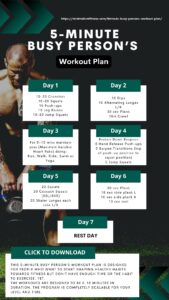If you struggle with Lower Back Pain, this article will walk you through the symptoms, causes and fixes.
Before you begin, if you are in severe pain or have a pre-existing injury be sure to consult an adequately qualified health professional before attempting anything you see in this article.
What causes Lower Back Pain?
Whether it’s from our sedentary jobs, previous injuries or training most of us have had lower back issues. These injuries or issues can sometimes leave us out of the game for extended periods of time and a decent physio or physical therapist is hard to find. Here are some common causes:
- Previous injury – The leading predictor for injury is previous injury.
- Exercise/Movement related – You were in the gym and something happened in a particular movement but you have been training consistently for a while.
- Sedentary lifestyle – Usually issues present here from going too hard too soon.
Lower Back Pain And Hip Pain
One of the most common causes for lower back pain as mentioned above is sitting too much. Too much time in the seat can also be linked to hip pain which can cause lower back pain by the shortening of our hip flexor group of muscles. Simply put, if we have tight hips we will try and gain the range from somewhere else, this will usually be the lower back or knee.
How to fix lower back pain
Not only does lower back pain force us out of training or enjoying our favourite activities it can also cost us financially, mentally and emotionally. The flow-on effect of injuries can last well after the injury has disappeared. As a first priority, we should be using a system that:
- Removes or mitigates any further risk or injury
- Gets us back to activity as soon as possible
- Can be done with minimal equipment or coaching
Starting with the breath
“Proper core stabilisation is necessary for all movements. Any deviation from the proper breathing, stability and motor systems strategy has a sequela throughout the entire musculoskeletal system.”
Tom Solecki
By starting with the breath, the body and nervous system have a chance to reset. Using diaphragmatic breathing or biomechanical breathing drills we will be able to more effectively stabilise our spine.
Lower back pain treatment
In order to achieve that we need to start with some basic knowledge and actions on to ensure we don’t make the problem worse. Firstly, we need to assess pain. How do we do this ourselves?
Tests, screens and assessments.
Just like my mobility test, 10 Step Self Screen you need a basic screen you can do yourself in order to know whether or not you should be heading off to the specialist or physio/physical therapist. If the lower back pain is unmanageable, skip the screen and go straight for a scan and second opinion. The rule of thumb here is, if in doubt, refer out.
Stretches for lower back pain
Once we have conducted our screen or received a second opinion it’s time to start our rehab. Time to recovery is different for everyone so ensure you pay due diligence to your rehab, test and assess regularly and refer out if you hit a roadblock. A simple approach to keep your rehab moving you can use is mobilise, stabilise and integrate.
Mobilise The Lower Back
Start by conducting some trigger point releases around the lower back. Complete each release for 2 minutes. Work on what is tight, if a particular area isn’t an issue, feel free to move on.
Iliopsoas
Glutes
Quadratus Lumborum (Lower Back)
Following this, you can use stretches like the Bretzel 1 and Bretzel 2 to start mobilising your lower back.
Stabilise Your Trunk (Core)
For this element, we look at trunk stability, glute activation and hip extension. We start from the floor and work to standing by adding stability exercises that challenge not only symmetrical stance but single and split stances. This is a little longer of a sequence, complete 1-2 times or as many as needed:
- 15 Hip Bridges (pick an option in the video that works for you)
- 15 Roller Rotations e/s
- 10 Deadbugs e/s
- 10 Bird Dog e/s
Integrate Patterns
Once we have restored range, stability and confidence (this is more important than you think) we can integrate the movement back into our training. Utilising symmetrical, split and single-leg stances reinforces the mobility and stability work we have just done. Here’s a workout that puts everything together:
Exercises for lower back pain
Correct exercise selection for the lower back is essential to help the individual return to function. When progressing back to activity you should aim for movements that focus on:
- Static stability before dynamic stability (e.g. Chop and Lift before Deadlifts)
- Building from floor to standing and;
- Once standing, movements that comprise of split stance, symmetrical and single leg positions
Dr Mark Cheng has a fantastic Groundwork Progressions video that highlights this method. For the coach or practitioner, here’s the in-depth version of the lower back reset for those wanting to really gain an understanding of the process:
